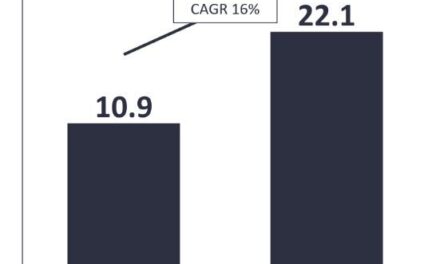The evolution of the laser originates with Albert Einstein’s early work on quantum mechanics, leading to his hypothesis of stimulated emission which dates back to 1917. This theory developed into a technology labelled Light Amplification by Stimulated Emission of Radiation (LASER) and, after a couple of decades, this technology began to be explored.
During the 40’s and 50’s, engineers and scientists began extensive work to explore the operative applications of lasers and the development of key technologies used today. Originally, MASER (Microwave Amplification by the Stimulated Emission of Radiation) was investigated, leading to the widely used and recognised microwave technology. Pioneering work by Townes and Prokhorov (who incidentally share a Nobel Prize for their work on masers and lasers), led to further research into the field by Theodore Maiman, the inventor of the first of its kind; the ruby laser.
This ruby laser was originally operated in 1960, some 43 years after the initial theory was formulated. Since then, advances in laser technology have led to a variety of deviations of the original idea, creating products from chemical lasers right through to x-rays. Today, the solid-state ruby laser is used in holography and tattoo/hair removal.
Solid-state lasers have since become industrialised, forming a group of technologies for use within manufacturing processes such as process and control, quality assurance and in-process and post-process measurements. Of these lasers, three main groupings have occurred; conductive, ultrasonic and optical.
Ultrasonic sensors use high frequency sound waves to determine distance through analysing the time taken from when the sound was sent, to when the sound is echoed back. Although a recognised method for taking measurements, the results are of a low accuracy and can produce inaccurate readings dependant on the material, making this inadequate for use where precision measurements are needed. This technology is used in many other applications aside from linear measurements including sonar, medical ultrasonography and burglar alarms.
Conductive lasers take two different forms; capacitive and inductive. Capacitive lasers produce high-precision readings but have a small measurement range and are affected by the surrounding environment. Inductive lasers are used for metallic surfaces and have a diminished precision. Both have specific applications within the manufacturing industry, fulfilling niche needs in measurement applications.
Optical lasers are those which are widely acknowledged to be the best technology for linear measurements. Although the concept of ‘time-of-flight measurement’ (how long it takes for a transmitted laser to bounce back) can be used for distance measurement, the low accuracy results make such technology unsuitable for gauging applications. Laser Triangulation units, as recently launched by Solartron Metrology, use the reflected angle of the projected laser to determine measurements, giving a higher degree of accuracy along a wide measurement range.
Laser Triangulation units consist of the laser and a detector with a lens proceeding it to enable the focusing of the light. The laser is essentially a controlled light emitted from the unit, which reflects from the desired material to be measured, on to the detector through the lens. The height is then measured using the degree of the angle, which, in basic terms, equates to the smaller the angle, the further away the material is.
This method of taking linear measurements has many benefits within the industry, including high accuracy, resolution and speed, good repeatability and linearity and long measurement ranges. Due to the small diameter of the laser beam, small targets can be measured in-keeping with the high accuracy achieved with larger target areas. As the cultural change within the manufacturing, electronics, automotive and many other industries’ lean towards non-contact measurement systems, the introduction of Solartron Metrology’s Laser Triangulation unit, labelled the Orbit®LT, was inevitable from a leader in innovation.
Although contact probes (such Solartron’s Ultra Feather Touch) can be used in many applications where non-contact is perceived to be the only option, the ability to take measurements with absolutely no contact can speed up the manufacturing process, creating time- and cost-efficiencies, along with providing the absolute assurance of no damage to the target material.
With the Orbit®LT linking into the Orbit®3 Network, probes and laser units alike can interact with one another to provide a complete solution for linear measurement applications. And with the highest amount of outputs on the market (Modbus, RS232 or RS485 Serial, USB, Ethernet TCP, Discrete NPN, PNP and Logic), installation becomes easier and simpler for users.
Boasting a 15 mm range with a 45mm offset, the ability to be calibrated to 0.1% full scale accuracy, 2 µm repeatability and 1 µm resolution, the Orbit®LT provides users with a cost-effective solution for linear measurement applications.
www.solartronmetrology.com 01243 833 333


